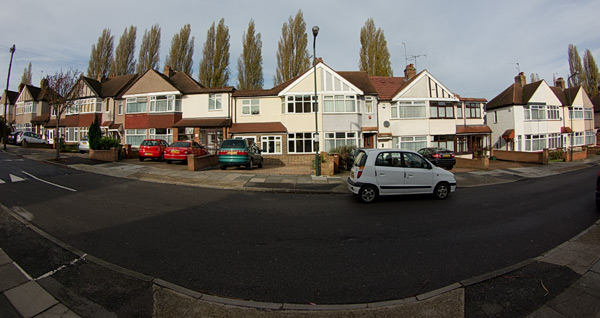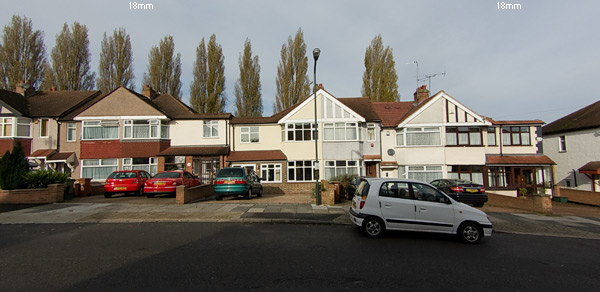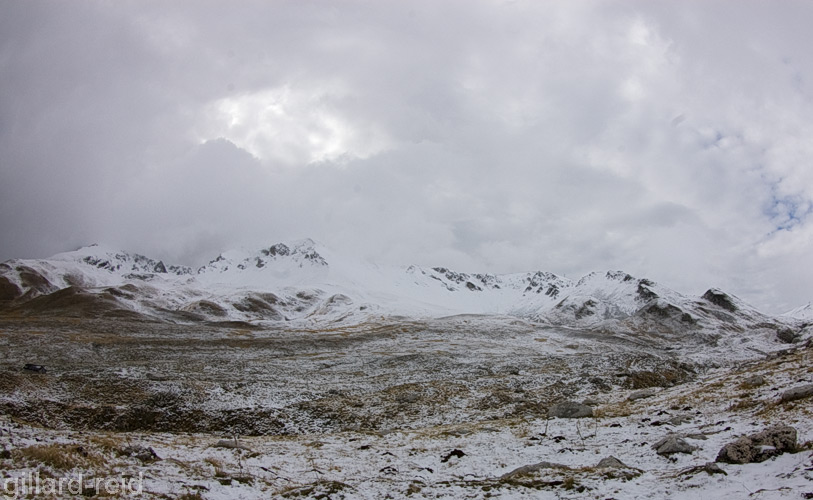

![]() Making
landscape photographs
Making
landscape photographs
![]() Do
I need more megapixels?
Do
I need more megapixels?
![]() Full frame or APS?
Full frame or APS?
My starting point
was an excellent web page here
which also mentions other alternatives (I didnt find the file type
restrictions mentioned on that page still apply).
My lens is the interesting Pentax 10-17 zoom fisheye. The software
tried will also correct barrel distortion but I have not tested that.
These are my first impressions.
Original image below
(sky cropped)

Panorama tools
Download and refer to the current readme files, (when I installed it I
needed to
copy four .8bf type files in to the plug-in filters folder, (place them
alongside other .8bf files, not in a folder on thier own). Also copy
pano12.dll to where other .dll files are kept.
CS3 should then restart OK with a panorama tools option in the filters
menu.
Images will need to be 8 bit or pano' tools is greyed out. Choose
"remap". Select fisheye source, normal destination. At 10mm the HFOV is
150 and the VFOV is 100*. A corrected image of the
quality part of the image will then be produced, this will be wider
than a Pentax 18mm but well short of fisheye. If you want the full
image go to "prefs" and select "save full file" and "open with
photoshop", then you can choose your own crop later.
panorama tools cropped
version below

PTLens
Install was simple. As was use, just play with the slider. The image from PTLens (below) will show you why the above image was automatically truncated, look at the purple fringing at left and right, for instance.
PTlens initial version below after cropping vignettes

The next job is to investigate ways of removing the purple fringing which was evident in both (full sized) results. This is a simple method, no doubt more complex ones yield better results. In PS open image | adjustments | hue/saturation. Select the blue or magenta channel. Use the left eyedropper tool to select the purple fringe and then desaturate till its not noticable. Repeat for other fringe colours.
(below)

There is still distortion in the image, (look at the silver "Mini" on the left) but for many applications it could work well. However, for anything rquiring quality results the edges of the image fall short due to the "stretching" needed to correct the image.
First field trip
In landscape work the fisheye effect may not be noticable at all (below).

The 10-17 set at 17mm is slightly wider (as you might expect) than the 18-55mm, used at these more moderate FOVs, defishing does not produce the loss of quality associated with "full on" 10mm fisheye shots.
(below)

*
(Calculating horizontal field of view and vertical field of view from diagonal field of view)
HFOV^2 + VFOV^2 = DFOV
HFOV/VFOV = aspect ratio, 1.5 for most 35 mm cameras
Solving for VFOV:
VFOV = (DFOV^2/(AspectRatio^2 + 1))^0.5
VFOV = 100, HFOV = 150
(thanks to Matt, Photosig member)